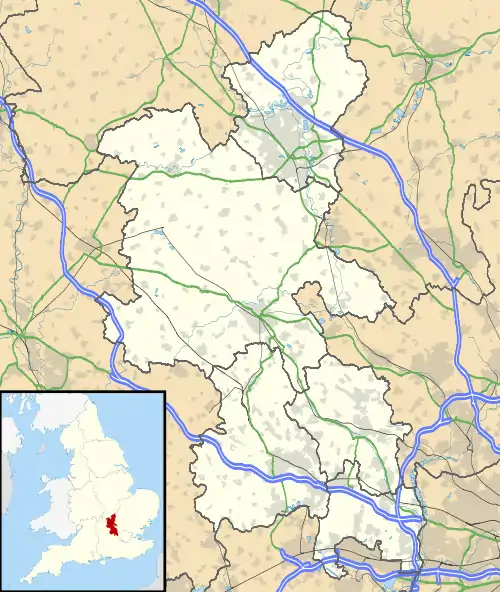Gayhurst
Gayhurst is a village and civil parish in the Borough of Milton Keynes, Buckinghamshire in England.[2] It is about two and a half miles NNW of Newport Pagnell.
| Gayhurst | |
|---|---|
 Gayhurst Location within Buckinghamshire | |
| Population | 128 (2011 Census)[1] |
| OS grid reference | SP849466 |
| Civil parish |
|
| Unitary authority | |
| Ceremonial county | |
| Region | |
| Country | England |
| Sovereign state | United Kingdom |
| Post town | NEWPORT PAGNELL |
| Postcode district | MK16 |
| Dialling code | 01908 |
| Police | Thames Valley |
| Fire | Buckinghamshire |
| Ambulance | South Central |
| UK Parliament | |
The village name is an Old English language word meaning 'wooded hill where goats are kept'. In the Domesday Book in 1086 it was recorded as Gateherst; later names include Goathurst.[3] At that time the manor was owned by Bishop Odo of Bayeux.[3]
Gayhurst had an outstation from the Bletchley Park codebreaking establishment, where some of the Bombes used to decode German Enigma messages in World War Two were housed.
In 1582, Queen Elizabeth I made a grant of Gayhurst Manor "in the event of its reversion to the Crown" to Sir Francis Drake,[3] but there is no record that he ever received it. The house once belonged to Sir Everard Digby (1578–1606), one of the conspirators in the Gunpowder Plot of 1605.[3]
The church of St Peter was built in the classical style in 1728 to replace a medieval church; the designer is unknown.[4]
References
- UK Census (2011). "Local Area Report – Gayhurst (E04001254)". Nomis. Office for National Statistics. Retrieved 18 November 2019.
- "Contact your Parish, Town or Community Council". Milton Keynes Council. Retrieved 10 October 2020.
- William Paige, ed. (1927). "Parishes : Gayhurst". A History of the County of Buckingham. Victoria History of the Counties of England. 4. Constable & Co. Ltd. pp. 343–347.
- Betjeman, J. (ed.) (1968) Collins Pocket Guide to English Parish Churches: the South. London: Collins; p. 127
| Wikimedia Commons has media related to Gayhurst. |